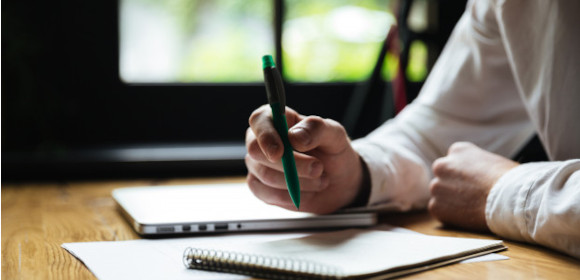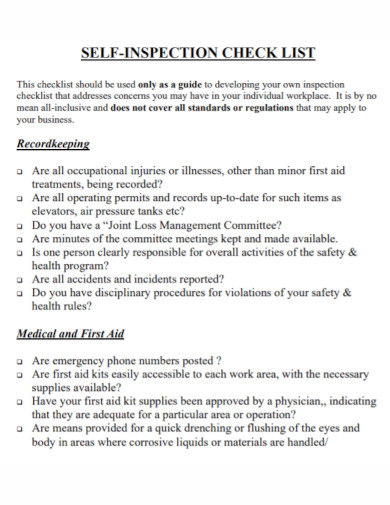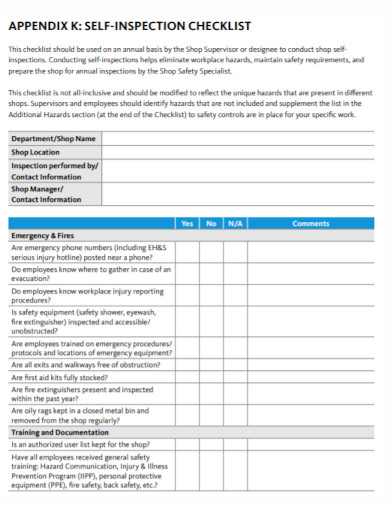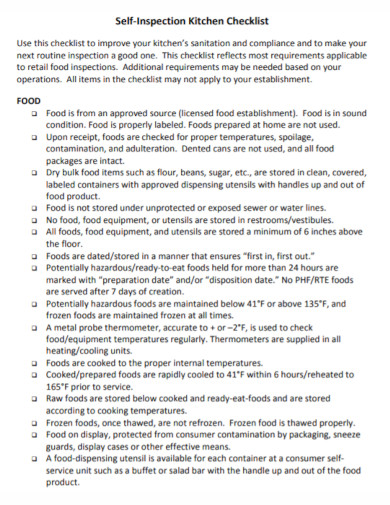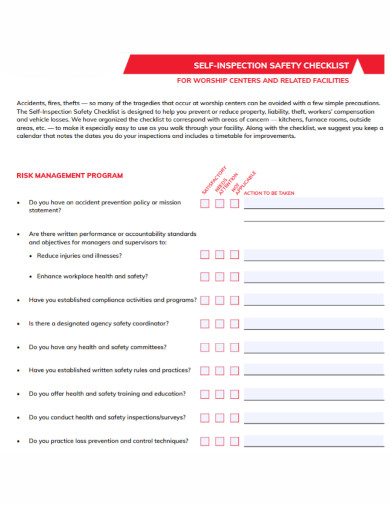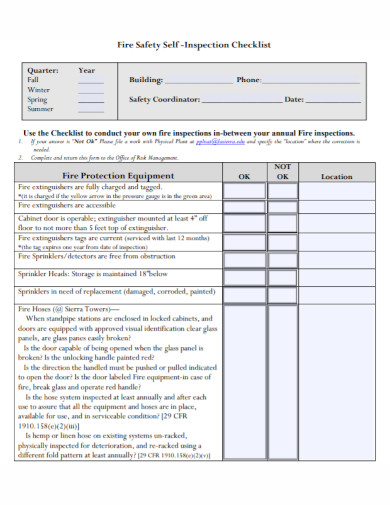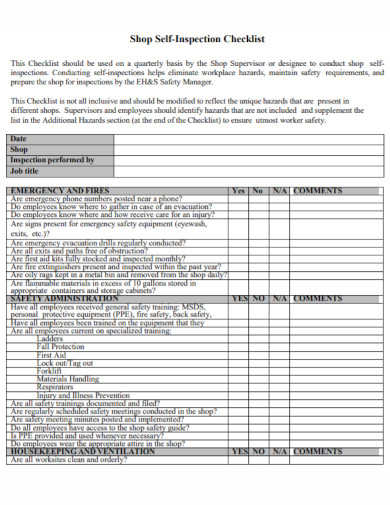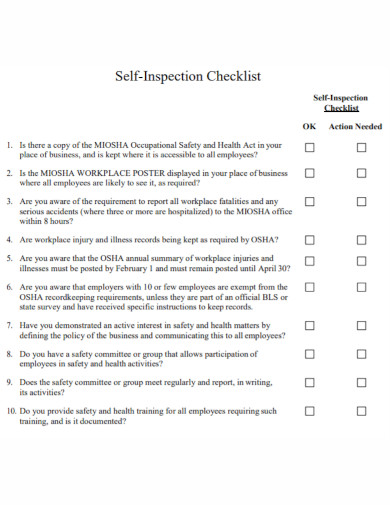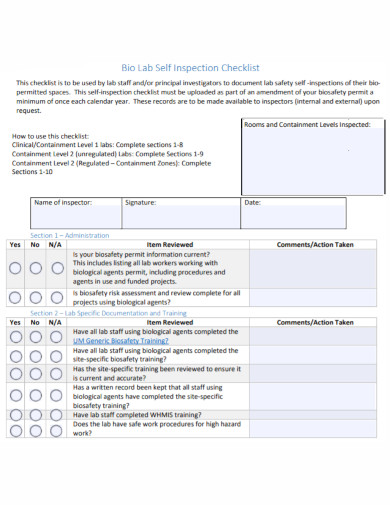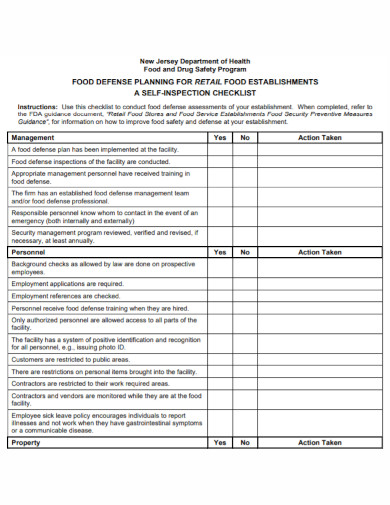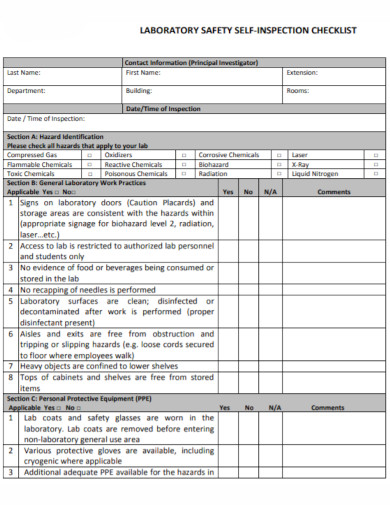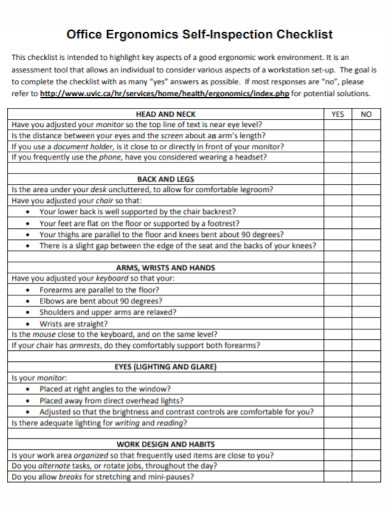10+ Self Inspection Checklist Examples to Download
Doing regular self-inspection can be one of the most effective way in finding hazards and in looking for preventions and safe procedures to eliminate them. These hazards can cause injury, harm and even illness. Checklists that are considered generic are not always proven to be effective because they either consist of a long list that are not necessarily applicable in the area. If your institution has several departments that has things needed to be checked individually, you may want to consider having an accurate checklist for it.
10+ Self-Inspection Checklist Examples
1. Self-Inspection Checklist Template
2. University Self-Inspection Checklist
3. Self-Inspection Kitchen Checklist
4. Safety Self-Inspection Checklist
5. Fire Safety Self-Inspection Checklist
6. Shop Self-Inspection Checklist
7. Education Self-Inspection Checklist
8. Bio Lab Self-Inspection Checklist
9. Drug Self-Inspection Checklist
10. Laboratory Self-Inspection Checklist
11. Ergonomics Self-Inspection Checklist
Self-Inspection Definition
Self-inspection is defined as a method that is used for making an overall review of the operation that you, yourself, have conducted. These aspects may have effect on quality assurance. It aims in identifying defects both the major ones and the minor ones. This type of inspection should only be conducted by someone who is competent in the institution. He or she does this to monitor if the institution has been correctly implementing and complying with the current principles. He or she ensures that everything has been checked and if there are potential hazards found, it should be handled properly using the corrective measures.
The purpose of self-inspection is to provide an evaluation of the whole operating system that may influence the quality of the products or services. This is not only focused on looking for the weakness of a particular institution, but also to prevent and implement effective solutions that corresponds to the problem.
Self-Inspection Team
There is also what we call as self-inspection team composed of members who are being appointed by the management. They are responsible for preparing a checklist which will be used for reference in the implementation process. Each of this members should be withdrawn from the quality control, quality assurance, research and development, engineering and even in the general affairs department. This team should be composed o members who are competent and with high conscience in quality assurance.
Coverage of Self-Inspection
The self-inspection team should be able to study and/or review the guidelines according to the needs of the institution. The following items are the ones who will be in need of further inspection as per requirement from World Health Organization (WHO):
- Personnel
- Premises and Equipment
- Maintenance
- Storage
- In-process controls
- Quality control
- Documentation
- Sanitation and Hygiene
- Validation and Revalidation Program
- Calibration of Instruments
- Labels control
- Results of previous self-inspection and corrective action
When conducting a self-inspection, each of the team members must be able to adhere to the procedure. You must be able to prepare a schedule and the area that needs to be inspected. Prepare also the self-inspection checklist and record all filling. Prepare for the report and recommendations in which you may distribute to the department head concerned. Lastly, you must be able to prepare for a corrective plan in response to the inspection you have conducted.
FAQs
What is the frequency of self-inspection?
Self-inspection should be conducted not on a daily basis, but at reasonable intervals that could cover areas or set of operations at least once a year or in short intervals if deemed necessary.
What are some of the questions that need to be asked when inspecting for medical and first aid?
You may consider asking if the emergency phone numbers have been posted, if first aid kits are accessible within the areas, and if the first aid kits are approved by physicians.
What should be included in the checklist when inspecting on a cionstruction site?
You should be focusing on the use of PPEs, fall protection, electrical hazards and communication protocols.
Self-inspection has been considered as beneficial among organizations and institutions. It should be able to involve anyone starting from the top management going to the front-line workers. It allows for detection of unsafe conditions and equipment to be able to provide corrective measures that could help in preventing injuries and other types of harm.


